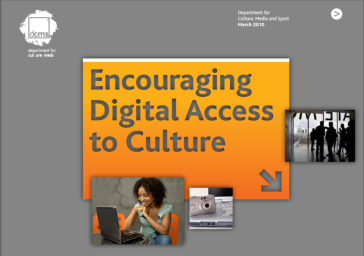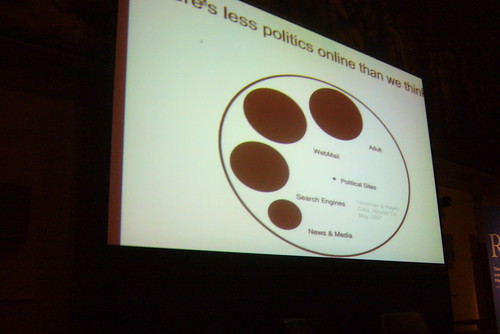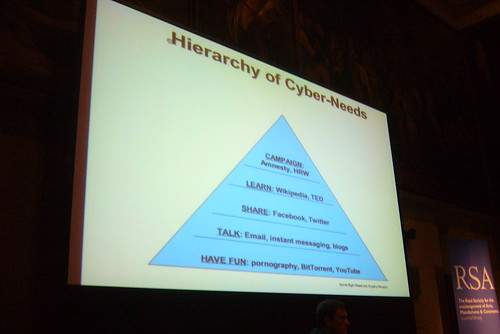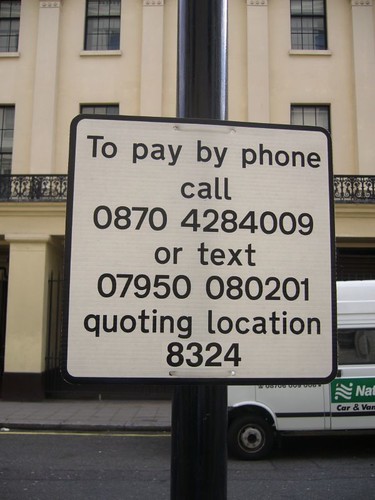#gbl10 I go to a lot of conferences, and get invited to attend even more, and sometimes get invited to speak Cogitating on't at them. There is a fine line, I think, between attending the conferences you need to maintain your skill set and your employability, and becoming a sort of conference junkie.
Cogitating on't at them. There is a fine line, I think, between attending the conferences you need to maintain your skill set and your employability, and becoming a sort of conference junkie.
And 'junkie' is a good word to use in this context because one of the effects of good conferences is that they induce a feeling of euphoria. You can tell this by what happens afterwards: there is almost nothing worse than the mild depression one starts to feel as one nears home, the train becoming less and less populated, and the remaining people looking tired, their ennui almost palpable, all brought to the fore by the post-adrenalin rush let-down.
The problem is, that feeling of euphoria can just as easily be brought on by conferences which, when all said and done, don't amount to a hill of beans, to use that wonderful quote from Casablanca. The fact is, although I added it as a follow-up to my original blog post on the subject of what makes a good conference, the issue of whether you can actually do anything practical as a result of attending is very important to me. You know, if all I want is a feeling of euphoria, there are all sorts of meetings I can go to, and come out feeling high, without spending a penny. But what would that achieve?
That's one of the reasons I thought about what makes a good conference: as well as attending several bad ones, I've also attended lots that make me feel good. The question is: is feeling 'good' enough?
Another reason is that I wanted to find a way of evaluating conferences that made comparison meaningful. I realise that not all conferences can be compared with others, because they are so different. But in economic terms, they are all goods competing for the same resources of time and money. From that point of view, I feel it my duty, both to myself and others, to start a record of how conferences fare against my criteria, in order to help me make choices in the future. (Although I acknowledge that Conference X next year will not be the same as Conference X this year; as Heraclitus said, you cannot jump into the same river twice.)
So yesterday I started the ball rolling by evaluating the Games-Based Learning 2010 Conference according to these criteria, and was quite surprised by the result. I really did enjoy the conference, but looking at the event in the cold light of those 14 points, I can see more clearly the not-so-great aspects of it.
I will need to think about this. Using those quasi-objective criteria forced me to think about the conference in a very detached way, as far as that's possible. As a result, the conference no longer shines quite so brightly to me. That will not deter me from attending next year's, or from recommending that others do so too. But it has made me think that in future conferences I shall be more 'robust' in my criticism of poor speakers, and more effusive in my praise of good ones, to take just one of the criteria. To some extent this year I allowed the 'euphoria' to blunt my edginess when it came to completing the evaluation form.
Yet at the same time, I wonder whether I am simply being too demanding. Does it even matter if some aspects of a conference 'suck', to borrow an American colloquialism? In these dark grey recessionary days, is not a glimpse of enlightenment to be welcomed, even if it is merely transitory?
I'd value your opinion on these matters, whether in the form of comments on this post using the facility here, or in Twitter or Facebook, or even by email.












